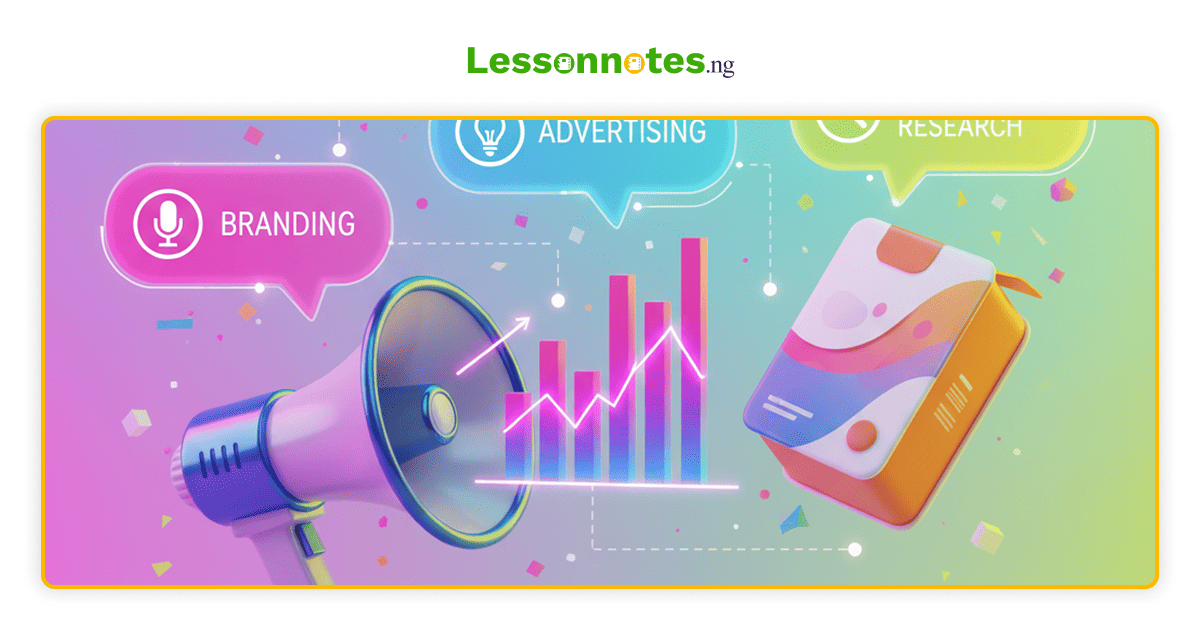Types Of Market I SS1 Marketing Lesson Note
Download Lesson NoteTopic: Types Of Market I
A market can be defined as a collection of current and future individuals or organizations who buy or sell products. It is simply a combination of buyers and sellers. These two groups can meet in a physical place (e.g. a shop) or can meet across miles, aided by telecommunications (increasingly, the Internet).
They meet to buy and sell goods or services. The term “market” is a shorthand for “any place or situation where two or e more people meet to exchange goods or services”. A set-up where two or more parties engage in exchange of goods, services and information is called a market. The two parties involved in a transaction are called seller and buyer.
The seller sells goods and services to the buyer in exchange for money. There has to be more than one buyer and seller for the market to be competitive. If you are in business selling a good or a service, you need to know about the market you are selling in – is it a busy one with lots of competitors, (other businesses trying to sell the same product), or are there very few competitors?
The type of market you operate in will have a big influence on your product’s success.
TYPES OF MARKETS
- Consumer Market: An individual who buys products or services for personal use and not for manufacture or resale is a consumer. A consumer is someone who can decide whether or not to purchase an item at the store, and someone who can be influenced by marketing and advertisements. Any time someone goes to a store and purchases a toy, shirt, beverage, or anything else, he or she is making that decision as a consumer.
The consumer market represents individuals and families purchasing goods and services for personal consumption.
- Government Market: This market consists of local, state and federal governments that purchase goods and services to support their internal operations and to provide essential services for citizens.
- Reseller Market: This is a market that consists of distributions, dealers, wholesalers and retailers who buy raw materials and finished goods to sell the product at a profit.
- Industrial Market: This is a market that consists of individuals or organizations that buy products for direct use in manufacturing other products for or for use in the daily operations of the
Characteristics Of the Consumer Market
The consumer market is for buyers who purchase goods and services for consumption rather than resale. However, not all consumers are alike in their tastes, preferences and buying habits. Different characteristics can distinguish certain consumers from others.
These particular consumer characteristics include various demographic, psychographic, and geographic traits. Marketers usually define these consumer characteristics through market segmentation, the process of separating and identifying key customer groups. These are:
i. Demographic characteristics: Characteristics of the consumer market: based on demographics include differences in gender, age, ethnic background, income, occupation, education, household size, religion generation, nationality and even social class. Most of these demographic categories are further defined by a certain range. For example, companies may identify the age of their consumers in the 18 to 24, 25 to 34, 35 to 54, 55 to 65, and 65+ age groups. Companies can then target their advertising towards these demographic groups. For example, a new cell phone may be targeted towards 18 to 24-year-olds with incomes between 325,000 and 350,000.
ii. Psychographic characteristics: Consumer markets can also be psychographic. Psychographic characteristics of consumers include interests, activities, opinions, values and attitudes. Many magazines are geared towards a consumer’s interest.
For example, prenatal magazines target expectant mothers who are interested in learning more about caring for a baby. Additionally, consumer activities can include participation in martial arts or bob basket weaving.
Opinions and attitudes can be both specific and general. A company may better understand consumer opinions and attitudes after conducting a focus group and can use that information to tailor advertising or marketing campaigns.
Consumer values can pertain to how a group of individuals feels about certain social issues, which can be of interest to non-profit or charitable organizations.
iii. Behavioristics characteristics: These include products according to -year usage rates, brand loyalty, user status or how long they have been a customer, and even benefits that consumers seek. Companies like to know how often their consumers visit their stores or use their products.
Company marketing departments usually try to distinguish between heavy, medium and light users, whom they can then target Vine with advertising. Marketers like to know which customers are brand loyalists, i.e. those consumers usually only buy the company’s brand.
iv. Geographic characteristics: Consumer markets also have different geographic characteristics.
These geographic characteristics are often based on market size, region, population density and even climate. A small retailer may find opportunities in a small market in which larger competitors have no interest.
Companies that sell beachwear will likely sell more products in warmer climates. Consumers in different regions of the country also have different tastes in food and style.






















